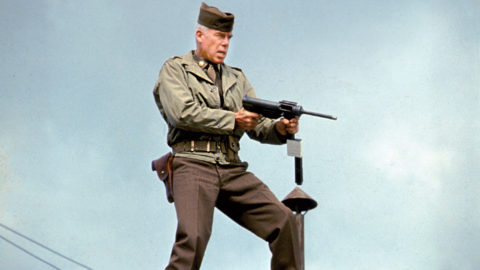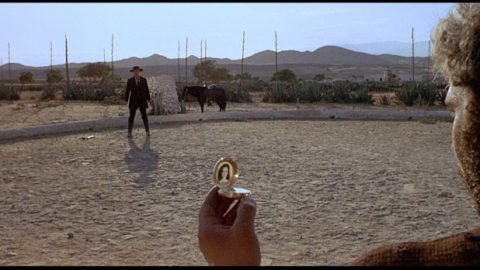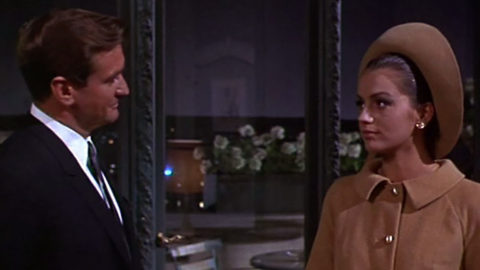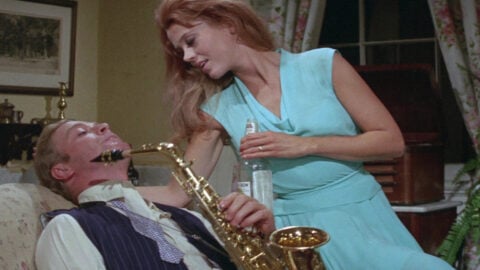Cinema ’67 Revisited: The Dirty Dozen
In my 2008 book Pictures at a Revolution, I approached the dramatic changes in movie culture in the 1960s through the development, production, and reception of each of the five nominees for 1967’s Best Picture Academy Award: Bonnie and Clyde, The Graduate, In the Heat of the Night, Guess Who’s Coming to Dinner, and Doctor Dolittle. In this biweekly column, I’m revisiting 1967 from a different angle. As the masterpieces, pathbreakers, and oddities of that landmark year reach their golden anniversaries, I’ll try to offer a sense of what it might have felt like to be an avid moviegoer 50 years ago, discovering these films as they opened.
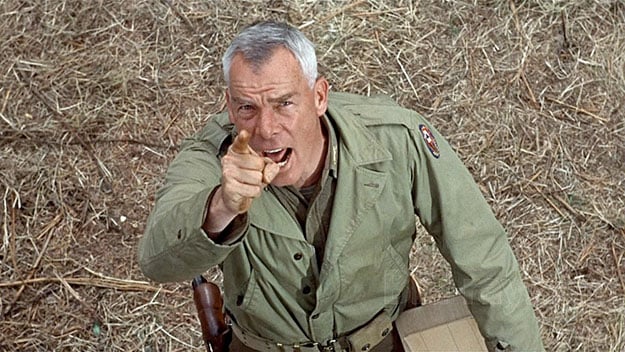
By the end of the summer of 1967, Arthur Penn’s Bonnie and Clyde would rewrite the rules for onscreen violence in American movies, and Norman Jewison’s In the Heat of the Night would take Hollywood’s depiction of race relations to a place it had never quite gone before. But 50 years ago this month—before either of those two films were released—Robert Aldrich helped, in a way, to prepare audiences for both of them. In 1965, Aldrich was coming off a challenging couple of years working on the Grand Guignol melodramas What Ever Happened to Baby Jane? and Hush…Hush, Sweet Charlotte, and he was eager to get out of the genre. He had already directed a number of relatively minor World War II movies (Attack, Ten Seconds to Hell), but he thought E. M. Nathanson’s just-published novel The Dirty Dozen could be turned into a new kind of war film. Seventy-year-old Nunnally Johnson, whose screenwriting credits stretched back to the end of the silent era, had taken a crack at the script; dissatisfied with the result, Aldrich turned it over to Baby Jane screenwriter Lukas Heller for a rewrite. Johnson’s script, said Aldrich, “would have made a very good, very acceptable 1945 war picture. But I don’t think that a good 1945 war picture is a good 1967 war picture.”
Heller didn’t flinch from the ugliness of the story’s premise. The Dirty Dozen is a special-mission movie that takes the motley-band-of-antiheroes premise into dark territory. The men recruited by officers Lee Marvin, Robert Ryan, and Ernest Borgnine for a likely suicide mission to assassinate German officers are rapists and murderers awaiting either execution or decades of hard labor, a setup that was to offend untold numbers of people, starting with its prospective cast: John Wayne and Jack Palance were among those who turned down roles because they objected to their characters’ behavior. The team Aldrich eventually assembled included Charles Bronson, Telly Savalas, John Cassavetes, and Cleveland Browns fullback Jim Brown—notably, the only member of the “dirty dozen” who is revealed as essentially innocent in a piece of dialogue in which he explains that he was convicted for fighting back against some “cracker bastards” who were trying to castrate him. “You had considerable justification,” Marvin tells him (and assures the audience).
“It was a very tough picture to shoot in many ways,” Angela Allen, who oversaw script continuity, told me in 2006 when I was researching Pictures at a Revolution. “On the set, Aldrich really was like the sergeant major. He controlled them all—but his style of shooting was that he covered everything. Three cameras on everything—even a single close-up would be close, medium, and long and use every lens in the book.” Not surprisingly, the film went over budget and weeks over schedule, grinding down the director and his ensemble. “The leading actors were a joy,” said Allen. “Everyone adored Lee Marvin,” the hard-drinking journeyman actor who, thanks to Cat Ballou, was, in his early forties, becoming a major star. “He was funny, charming, very professional. He had a couple of nights when, you know, he couldn’t quite make it the next day. But he’d always make up for it. And Telly was fun—he used to run the poker game. But the young ones! Especially John Cassavetes. I used to line them all up and make sure their clothes were matching…I’d get to the end of the line and there was John like a four-year-old, all unbuttoned. You never knew what he was going to do or what would come out of his mouth.” (Cassavetes’s penchant for surprising everyone eventually paid off with a Best Supporting Actor Oscar nomination.)
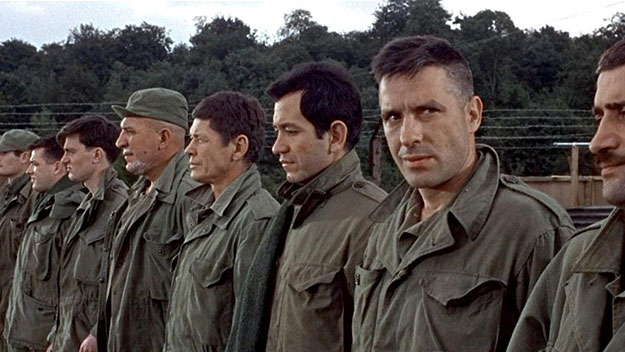
When The Dirty Dozen opened, many critics reacted with undisguised horror, none more strenuously than The New York Times’s Bosley Crowther, then approaching the end of nearly three decades on the job. He called the film “astonishingly wanton” and complained, “To bathe these rascals in a specious heroic light…is encouraging a spirit of hooliganism that is brazenly antisocial…a studied indulgence of sadism that is morbid and disgusting beyond words.” Crowther kept up the attack in subsequent pieces, including a Sunday essay called “Movies to Kill People By,” in which he found—not entirely inaccurately—strains of both the counterculture and fascism in a “slaughterhouse film” that would allow its audience to “come away…palpitating with a vicarious sense of enjoyment in war.”
The critical battle lines over the movie were complex. Pauline Kael, who often loved to mock and belittle Crowther, had little use for the film, conceding only that “I think that the violence in The Dirty Dozen, which isn’t a work of art, and whose violence offends me personally, should…be legally defensible, however morally questionable.” But in Life magazine, Richard Schickel offered qualified support for the picture, writing that although it was “confused, violent, sometimes tasteless…it seems to be one of the most interesting films about the brutalizing effects of war that we have had from American filmmakers in the past decade.” He also twitted Crowther for suggesting that American soldiers would never behave this way: “Fiction deals not merely with the probable but with the possible.”
It’s clearly the last half-hour of The Dirty Dozen that excited so much of the anti-violence commentary—and the audience. When, after two hours, the mission finally kicks into high gear, Bronson shoots a German soldier in the back. The unrepentant racist and sexual sadist played by Savalas takes evident pleasure in stabbing a German woman before he himself is killed by Brown. And most notably, Brown is responsible for slaughtering an immense number of Germans, burning them alive in a scene Aldrich said was intended to remind viewers of the napalming they were then reading about in the newspapers. It was the first time in a mainstream American movie that a black good guy was allowed to be visibly responsible for the deaths of scores of white people, even while standing defiantly apart from the system that ordered him to do so. Brown’s line to his commanding officer—“That’s your war, not mine”—was a Vietnam-era sentiment implanted in a World War II movie, although, remarkably, Vietnam went unmentioned in almost every review of the film. But it’s the film’s melding of anti-authoritarianism and team spirit that has proved to be a blueprint for five decades and counting: without The Dirty Dozen, there is no Inglourious Basterds and (for better or worse) no Suicide Squad.
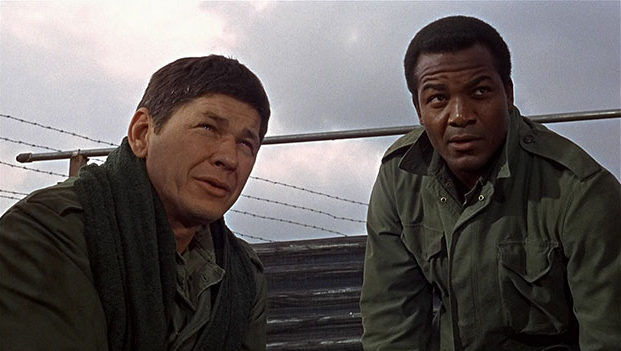
In later years, Aldrich would insist that what looked like a shrewd attempt to seize the moment was nothing more than dumb luck. “When we planned The Dirty Dozen in 1965,” he said shortly before his death in 1983, “do you think for one moment we knew that by the time the film came out, the French kids would be in revolt and Americans would be sick of Vietnam so the mood would be just right for our picture? Rubbish.” But The Dirty Dozen ended up appealing to audiences across the political spectrum. Rebels appreciated its anti-authoritarian take on the military command as cynical death-dealers willing to use soldiers as pawns. The “enlisted-man” demographic (as Time magazine called them), whose take on war was connected to a bedrock belief that bosses usually didn’t know what they were doing, loved the film as well, as did military idealists who believed that even the worst men could be molded into a functioning corps if the stakes were high enough. Aldrich’s own take was divided; in one interview, he said the point of The Dirty Dozen was “to show that almost anybody could be redeemed if certain circumstances are sufficient,” but also said, “I wanted to make the point that violence is just as disagreeable when it comes from Americans as when it comes from Germans.”
Ultimately audiences who just wanted a good war story with less sentimentality and more action and violence than Hollywood customarily offered may have been the film’s most important constituency—especially African-American moviegoers, who were only just beginning to be recognized by studios as an essential and vast segment of the moviegoing population in cities, and who had never been offered a hero like Jim Brown before. By July, most of the controversy had been swept away by much bigger news—Newark and Detroit were burning—and by the film’s bottom-line success. MGM boasted that the film now had the highest one-week gross in the studio’s history, and Aldrich, who said he had greeted the initial reviews “by jumping into a bottle of Johnnie Walker,” was emerging for a victory lap. Eventually, The Dirty Dozen would be seen as the harbinger of a new era of darker, grimmer, more brutal, and more cynical war films—an early New Hollywood movie conceived before the label even existed. “We got on a wave that we never knew was coming,” he said. “Not a wave. A tidal wave.”
How to see it: The Dirty Dozen is available on DVD and Blu-ray and streams on Amazon and iTunes.
Mark Harris is the author of Pictures at a Revolution: Five Movies and the Birth of the New Hollywood (2008) and Five Came Back (2014).



